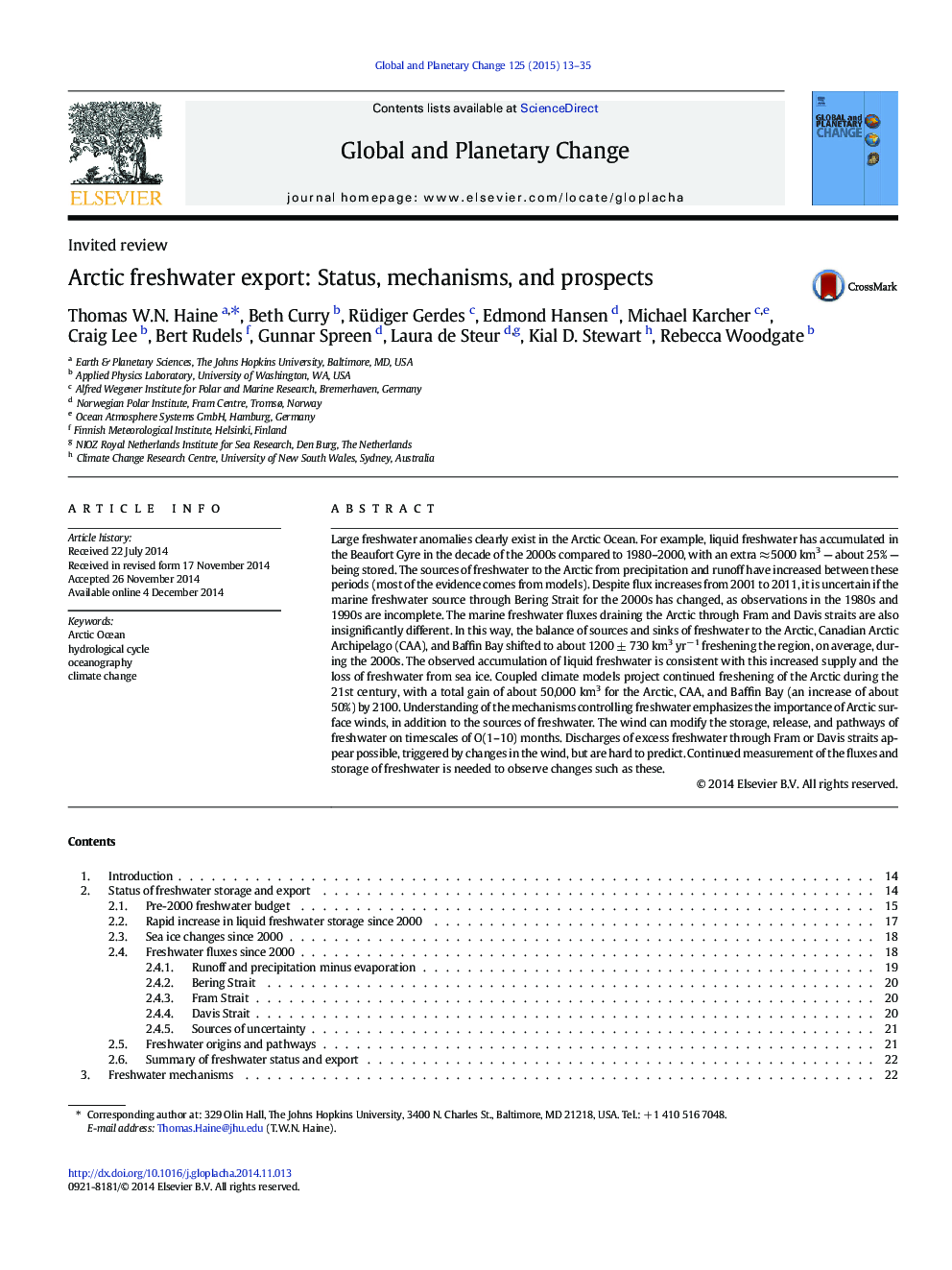| کد مقاله | کد نشریه | سال انتشار | مقاله انگلیسی | نسخه تمام متن |
|---|---|---|---|---|
| 4463399 | 1621657 | 2015 | 23 صفحه PDF | دانلود رایگان |
• Unprecedented volumes of freshwater have accumulated in the Arctic Ocean since 2000.
• Models suggest that the extra freshwater derives from increased precipitation and runoff, and a smaller volume of sea ice.
• The net export flux of Arctic freshwater to the North Atlantic Ocean has not changed significantly in the last decade.
• Climate projections suggest increased inflow, storage, and outflow of freshwater to the Arctic in the 21st century.
• It is possible that large freshwater discharges to the Atlantic could occur, triggered by changes in Arctic winds.
Large freshwater anomalies clearly exist in the Arctic Ocean. For example, liquid freshwater has accumulated in the Beaufort Gyre in the decade of the 2000s compared to 1980–2000, with an extra ≈ 5000 km3 — about 25% — being stored. The sources of freshwater to the Arctic from precipitation and runoff have increased between these periods (most of the evidence comes from models). Despite flux increases from 2001 to 2011, it is uncertain if the marine freshwater source through Bering Strait for the 2000s has changed, as observations in the 1980s and 1990s are incomplete. The marine freshwater fluxes draining the Arctic through Fram and Davis straits are also insignificantly different. In this way, the balance of sources and sinks of freshwater to the Arctic, Canadian Arctic Archipelago (CAA), and Baffin Bay shifted to about 1200 ± 730 km3 yr− 1 freshening the region, on average, during the 2000s. The observed accumulation of liquid freshwater is consistent with this increased supply and the loss of freshwater from sea ice. Coupled climate models project continued freshening of the Arctic during the 21st century, with a total gain of about 50,000 km3 for the Arctic, CAA, and Baffin Bay (an increase of about 50%) by 2100. Understanding of the mechanisms controlling freshwater emphasizes the importance of Arctic surface winds, in addition to the sources of freshwater. The wind can modify the storage, release, and pathways of freshwater on timescales of O(1–10) months. Discharges of excess freshwater through Fram or Davis straits appear possible, triggered by changes in the wind, but are hard to predict. Continued measurement of the fluxes and storage of freshwater is needed to observe changes such as these.
Journal: Global and Planetary Change - Volume 125, February 2015, Pages 13–35
